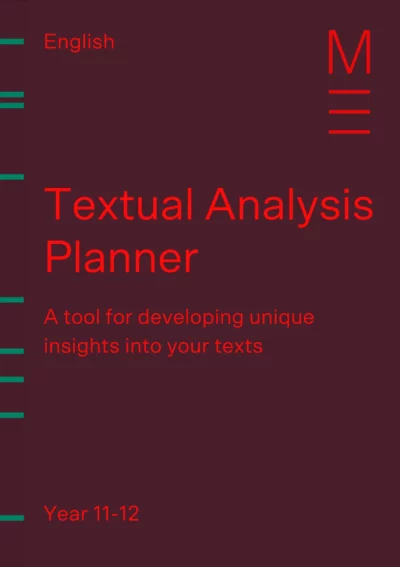Welcome to Matrix Education
To ensure we are showing you the most relevant content, please select your location below.
Select a year to see courses
Learn online or on-campus during the term or school holidays
Learn online or on-campus during the term or school holidays
Learn online or on-campus during the term or school holidays
Learn online or on-campus during the term or school holidays
Learn online or on-campus during the term or school holidays
Learn online or on-campus during the term or school holidays
Learn online or on-campus during the term or school holidays
Get HSC Trial exam ready in just a week
Get HSC exam ready in just a week
Select a year to see available courses
Science guides to help you get ahead
Science guides to help you get ahead
Knowing techniques is half the battle, in part two of our Literary techniques series we explain how to analyse your way to English success.

Guide Chapters
Join 75,893 students who already have a head start.
"*" indicates required fields

Join 8000+ students each term who already have a head start on their school academic journey.
This is the second post in our Literary Techniques series. In it, we’re going to explain how to analyse literary techniques in poetry and prose.
If you haven’t seen our Essential Guide To English Techniques, you should check that out to see a comprehensive list of literary techniques for you to use in your textual analysis. While this list is useful, if you want to push your essays to a higher level, you need a more targeted and practical list of techniques, and an explanation of how to analyse them.

The purpose of this blog post is to provide this higher order guide to textual analysis. In it, we will explain how to look for these techniques in a text and discuss them in detail.
If you want an even more detailed guide to Studying English for the HSC, you should read our Beginner’s Guide to Acing HSC English.
Level up how you analyse texts and take notes with expert strategies and templates! Fill out your details below to get this resource emailed to you. "*" indicates required fields
Download your FREE Textual Analysis Planner

Download your FREE Textual Analysis Planner
First, you need to keep in mind why you’re analysing literary techniques. It’s not an arbitrary exercise.
As a student of Advanced English you are required to make arguments about human nature by drawing on evidence from your prescribed and related texts. The evidence is always analysed by explaining how the form of the text (the techniques it’s made from) creates meaning or, more broadly, effects (such as generating an emotional effect in the audience).

In other words, you’re showing how the techniques in the text reveal aspects of the human experience. For an elementary example of how a technique creates meaning, consider the following quotation. Imagine it appears in a poem about the end of a relationship.
‘Our journey together has come to an end.’
In this metaphor, the speaker is comparing a relationship with a journey.
We know it’s a metaphor since the speaker is not literally describing some recent journey. The context of the poem suggests the speaker is referring to a relationship. They are applying a property of the idea of a journey to the idea of a relationship, which is the idea they’re talking about.
This is how all metaphors, as well as varieties of metaphor (such as personification) work. The properties of one object or idea are applied to another object or idea in order to express something innovative about it.

Although this is a simple example, it already presents some complications.
Journeys have many properties. Which one of these is being applied to the concept of a relationship?
The correct interpretation will be inferred from the context of the utterance.
More complex still is this example from the Common Module text, Nineteen Eighty-Four. In the Common Module, students are required to show how texts explore human experiences. A student might have to show how, for example, Orwell’s novel Nineteen Eighty-Four explores the impact of state manipulation of reality on the minds of the population. A student might pick this passage, which clearly relates to that theme:
“The past, he reflected, had not merely been altered, it had been actually destroyed. For how could you establish even the most obvious fact when there existed no record outside your own memory? He tried to remember in what year he had first heard mention of Big Brother. He thought it must have been at some time in the ‘sixties, but it was impossible to be certain. In the Party histories, of course, Big Brother figured as the leader and the guardian of the Revolution since its very earliest days. His exploits had been gradually pushed backwards in time until already they extended into the fabulous world of the ‘forties and the ‘thirties, when the capitalists in their strange cylindrical hats still rode through the streets of London in great gleaming motor-cars or horse carriages with glass sides. There was no knowing how much of this legend was true and how much invented. Winston could not even remember at what date the Party itself had come into existence. He did not believe he had ever heard the word Ingsoc before 1960, but was possible that in its Oldspeak form – ‘English Socialism’, that is to say – it had been current earlier. Everything melted into mist. Sometimes indeed, you could put your finger on a definite lie. It was not true, for example, as was claimed in the Party history books, that the Party had invented aeroplanes. He remembered aeroplanes since his earliest childhood. But you could prove nothing. There was never any evidence.”
It is obvious that this passage deals with the theme of how state manipulation of reality affects the minds of the population.
In Advanced English, however, you must quote something from this paragraph to demonstrate the point, and you need to analyse the quotation as a technique.
This is challenging enough with poetry, but arguably more difficult in the case of prose, which is less laden with techniques.
If you are scanning this passage for techniques, you will probably notice Orwell’s central metaphor summarising how Ingsoc’s control over representation affects history: ‘Everything melted into mist.’

How should we analyse this technique?
We need to understand how metaphors create meaning. Orwell is not literally saying that the past has melted. Instead, he is comparing the past to a solid that has melted, in order to suggest that the endless revision of historical documents has rendered the past almost unreal to citizens of Oceania like Winston.
It should also be pointed out that this is a short clause in a long extract. If you’re struggling to find other techniques, this suggests you need to study the kinds of techniques used in prose. This article aims to help you improve on these two fronts: having a toolkit of the core techniques used in poetry and prose, and understanding how to analyse them.
There are many techniques, but some appear more than others. Common techniques include metaphor and symbolism. While it might seem impressive to drop fancy terms like ‘epizeuxis,’ these terms usually refer to less common techniques. Dropping terminology like this can often appear quite ostentatious, which can put your reader off.
Techniques are partly a matter of logic, partly interpretation. Metaphors, as we have seen, always have the same logical structure – they apply the attributes of one object to another in order to suggest an idea about it. Knowing this makes it easier to write about metaphors.
When you think a quotation expresses a metaphor, the first thing you should do is identify the two objects/ideas. Then you should work out which of the two the author is trying to say something about.
In the latter example, the speaker was probably trying to say something about love, not journeys.

While techniques have a logical structure, they’re also a matter of interpretation. There are no shortcuts here. If you want to interpret texts skillfully, you need to work hard.
First, you should practise interpreting texts as often as possible, which means submitting work for feedback from someone who knows what they are doing. This authority has the responsibility of correcting you whenever your interpretations fall short.
You should also read high-quality literary criticism, which will show you how an expert analyses techniques.
Finally, you should revise your own analyses, looking for ways you can tighten them up.
A strategy that works with figurative techniques is to ask yourself whether a given word or phrase can be interpreted literally.
If you think it can’t be, ask yourself why. The answer will often lead you to the technique employed. In the case of the metaphor from Nineteen Eighty-Four above, it is not literally the case that the past has melted into mist. Rather, Orwell is suggesting something about the constant revision of the past on Winston’s mind.
Learn how to utilise and discuss techniques in your Module C response!
Produce insightful analysis & Band 6 essays!
Expert teachers. Band 6 resources. Proven results. Boost your English marks with our On Campus course.
Written by June Heo
June launched the popular Matrix Blog in 2011 to make high-quality resources accessible to all students.© Matrix Education and www.matrix.edu.au, 2025. Unauthorised use and/or duplication of this material without express and written permission from this site’s author and/or owner is strictly prohibited. Excerpts and links may be used, provided that full and clear credit is given to Matrix Education and www.matrix.edu.au with appropriate and specific direction to the original content.